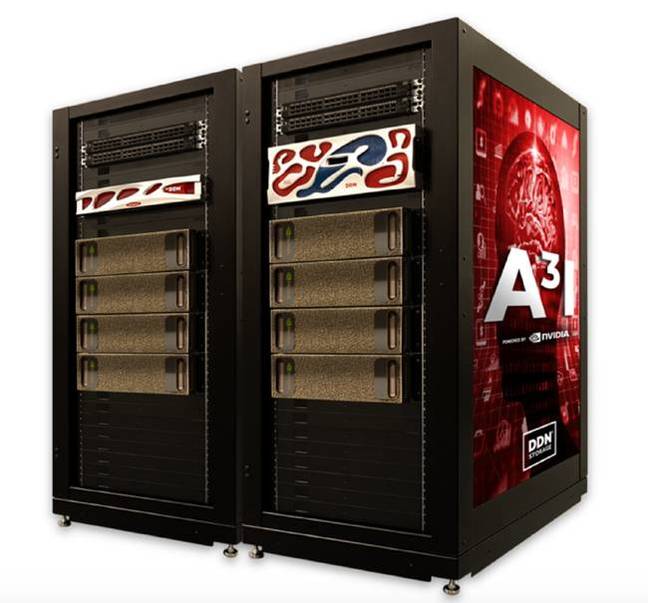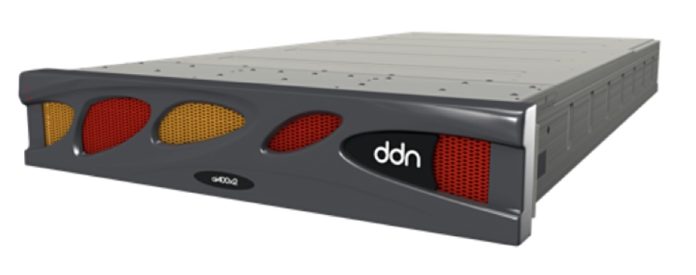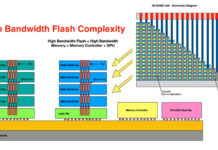DDN is focussing on AI, container and edge environments in product developments for this year in its HPC and now enterprise storage supplier journey.
The company presented at an IT Press Tour briefing and said it was powering the next era of data-centric computing. We are seeing the end of the serial data era, according to DDN. NFS is coming to a close as parallel file systems, management, and movement are replacing the old world.
VP marketing Kurt Kuckein said AI has been at the heart of DDN’s growth over past two years. DDN’s 2021 revenues were roughly same as 2020 – although there was big growth in AI and in US Commercial ($4B), there was overall single digit growth in 2021 due to the pandemic.
The briefing touched on NexentaStor, Tintri VMStore and ExaScaler developments. NexentaStor, which is robust, multi-protocol, and lightweight, is running in telco edge environments and there are several 100 implementations at major telcos world-wide. Kuckein said there was a rise in using analytics at the edge, and the product’s use will spread beyond telcos.
Sean Myers, the field CTO for Tintri, said VMStore product development had fallen behind a little in 2021. It was behind on some of its plug-ins – vSphere, vROPS, etc. – because a lot of Tintri’s engineering talent quit in the troubled times which led up to DDN’s acquisition of Tintri. This “took a while to build back – a couple of years. Now we’re actually growing.” VMStore is now all-NVMe.
Myers said “We’ll allow our APIs to integrate with whatever AI tools a customer has.” The automated Quality of Service (QoS) facility will be expanded. It currently supports and tracks IOs to SQL databases, virtual machines (VM), where it can track up to 2,5000 VMs per VMstore. It also supports VMware Tanzu where it tracks IOs at the PVC (Persistent Volume Claim) level. This will be be extended to go deeper, first tracking IOs to Pods and then the stateful container level.

Tracking at the stateful container level could involve 5Xm 10x, or more IOs. It’s still being worked out. Per-Pod will be less taxing than per-container.
VMstore will be converted into container-based software, making it more portable, and able to work with any Kubernetes distribution.
A new IntelliFlash enclosure is coming in the next few months.

SVP product management James Coomer talked about the ExaScaler Management framework and said DDN will plug in more tools to deploy more clients and ancillary services. It will improve real time nature of monitoring for whole system by making the Collector software run faster.
DDN will apply more analytics to metadata, and allow it, for example, to be accurate when sizing an upgrade path for workloads. The ExScaler (Lustre) system will scale up to larger models, with NVMe Flash, larger SDDs and HDDs.
There will also be tighter integration into AI frameworks and completely racked systems including more workload data environments with complete software architectures.
We asked if Nvidia’s GPUDirect (GPUD) levels the playing field for DDN and its competitors in feeding data to NVIDIA GPUs. Not so, said Kuckein. “We have a very distinct performance advantage.”
That lies in areas outside the GPDU connection. Coomer said “GPUD prepares us for the future. GPUs will get faster and faster. CPUs will increasingly become bottlenecks. GPUD is a must-have checkbox. But users need more. … We have end to end parallelism [which is] different from others. … We have an intelligent client (100GB/sec plus) so individual applications go faster.”
We expect DDN to spread and develop its product wings broadly across its product range this year, with AI front and centre in its sights. It thinks it can match the competition in feeding data to Nvidia GPUs, but use the GPU connectivity better to speed applications and users relying on the GPUs. The Tintri container-focussed developments should make VMstore a more consistent supplier of storage IO to containers and that could be important in enterprise environments.
Hopefully DDN will, as a result, grow faster in 2022 than in 2021.








